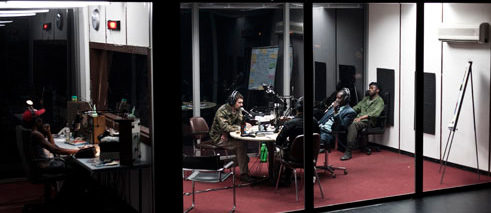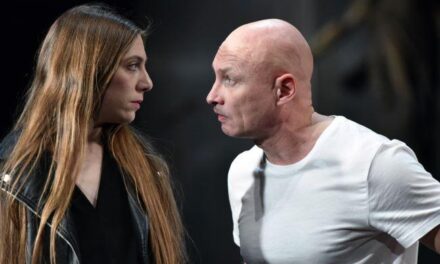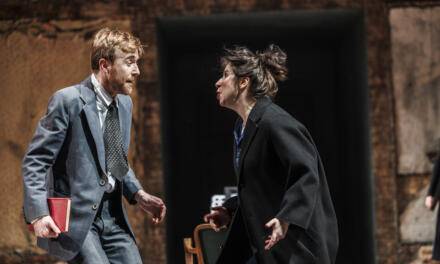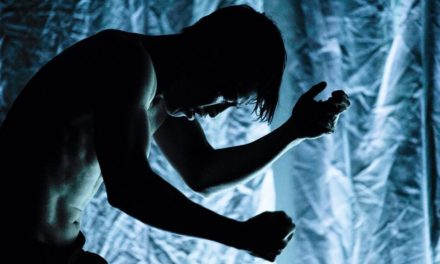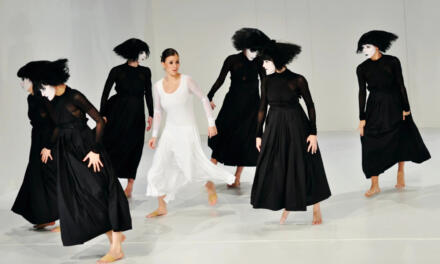Hardly another art form is better suited for the work of remembrance than the theatre as a medium of presence. The stage can make the past present without having to commit itself to the facts down to the last detail.
“To invent is to remember”, the actor Joachim Meyerhoff once noted in one of his memoir- novels based on his autobiographical reading performance Alle Toten fliegen hoch (All The Dead Fly Up On High) at the Vienna Burgtheater. In a very free interpretation of vouched-for facts, Meyerhoff fables together his life. Interestingly, however, the result coincides with the memories of his brother, who corroborates the actor’s account: the events actually happened exactly as described. Evidently, there is something like a felt truth, at least in private memory, which, in the best case, can even be shared with other people from the same personal surroundings. But how is it with collective remembrance?
HISTORICAL AND COLLECTIVE REMEMBRANCE
In his work, the Swiss theatre director Milo Rau opens, again and again, spaces of historical remembrance. He speaks, as a matter of fact, of a “historical feeling” and reports an aha experience. In his play Hate Radio (2011), Rau treated the genocide in Rwanda in 1994, particularly the role played by the Hutu broadcaster RTLM, whose radio DJs called for the extermination of the Tutsi minority. Rau re-enacted one of these broadcasts, replete with hits and rabble-rousing. The texts of the moderator team embodied by the actors were based on research material, which, however, was heavily condensed. Lest the play appeal to a European audience for reasons of exoticism, Rau built into his “re-enactment” songs from Nirvana and other bands that were popular in Europe in the 1990s, although RTLM, in fact, played African music. Hate Radio had guest performances in the capital of Rwanda, Kigali. The astonishing thing was that, in spite of the obvious departure of parts from historical fact, contemporary witnesses confirmed that events had occurred in 1994 just as in the play. The theatre, Rau is convinced, can catch the “pitch of collective remembrance”, a historical feeling “not bound to the truth of details”.
SPACES OF REMEMBRANCE IN MUSIC
Music used as a carrier of emotions thereby often plays a major role. Also in the work of Christoph Marthaler, although his theatre and that of Rau could hardly be more different. “For me, theatre is a work of remembrance,” declares Marthaler, in whose productions there is often singing, especially by choruses. Music, says Marthaler, opens the possibility of remembering things. Even more, music can help you “remember a time you never experienced.”
This idea is behind both Murx Den Europäer! (Murx The European!), Marthaler’s first production at the Berlin Volksbühne in 1993, in which the director traced the sense of life in the late GDR, and his last play at the same stage in 2016, Bekannte Gefühle, Gemischte Gesichter (Known Feelings, Mixed Faces), in which he makes his own theatre work the subject of remembrance.
Christoph Marthaler “Bekannte Gefühle, Gemischte Gesichter” (Known Feelings, Mixed Faces) at the Volksbühne Berlin.
In theatre, Marthaler explained to his favorite dramaturg, Stefanie Carp, the present is always a time infused “with a past, with a memory”. The chorus is the “embodiment of a place of collective memory”. Songs open spaces of association.
DELIBERATE MELANCHOLY
That the memories triggered by music are not infrequently of a sentimental nature is hardly surprising. Marthaler deliberately makes this melancholy the theme of his plays. The work of remembrance takes place here so to make perceptible and palpable the passing of time and transience. By which Marthaler touches on the existential. On the other hand, where theatre focuses on social or political questions, melancholy can quickly get in the way of a clear view of the past. Then there is the danger of idealization, or at worst of the misrepresentation of history. The best example of this is viewing the GDR under the aspect of (n)ostalgia.
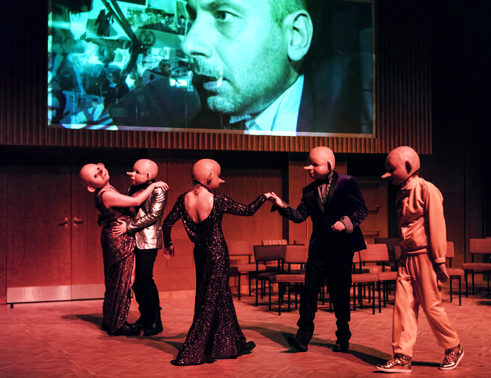
Claudia Bauer 89/90 |Photo: Rolf Arnold
At the Schauspiel Leipzig, the director Claudia Bauer has escaped this danger. Her stage adaptation of Peter Richter’s Wende novel 89/90 succeeds in casting a sober look at this chapter of German history, and this in a métier that uses remembrance as a psychological trick in the production of art. Remember something sad, actors are always told, when they have to produce tears on stage.
Against this theatre of empathy, Bauer has set the good old alienation effect. In her production too, there are choruses, sentimental local songs, but also GDR punk songs, never close to original but rather always in idiosyncratic arrangements and new settings of song texts. In this way, Bauer paints history in neither simply the joyous nor the gloomy colors of the past, but rather only sketches the outlines of gestures whose contours allow us to recognize our present-day society of transition all the more clearly. The making present of the past here serves the sharpening of awareness for the present.
There lies the force of the theatre as a medium of presence, as a place for remembrance. Unlike film and television, which inherently keep the audience at a (technical) distance, in theatre the past becomes present, remembrance becomes a live experience.
For Milo Rau, at any rate, this is part of the essence of theatre: “In theatre, remembrance flows through us as something undead, present, real”. Even if it is only an invention.
This post originally appeared on Goethe Institut in August 2017 and has been reposted with permission.
This post was written by the author in their personal capacity.The opinions expressed in this article are the author’s own and do not reflect the view of The Theatre Times, their staff or collaborators.
This post was written by Christoph Leibold.
The views expressed here belong to the author and do not necessarily reflect our views and opinions.

